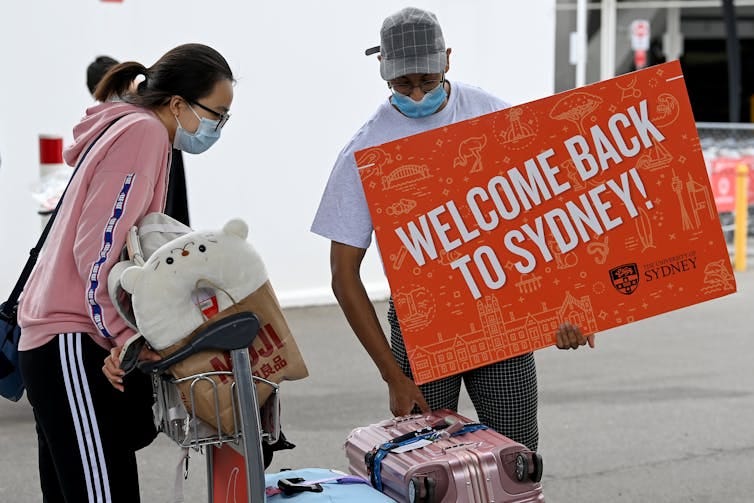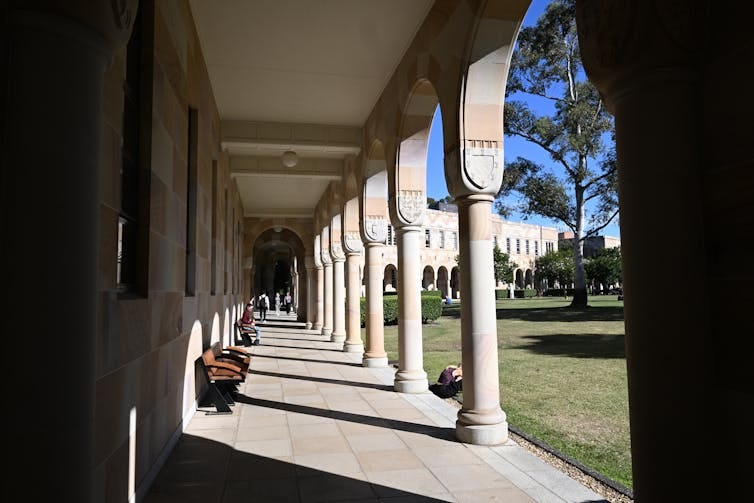Education onshore or offshore
Australian education is off-shoring and setting up campuses across Asia
Australia made 9 changes to student migration rules over the past year. We don’t need international student caps as well
Andrew Norton Published: August 4, 2024 9.08pm BST
This week a Senate inquiry will look at the federal government’s controversial legislation to cap international student numbers in Australia from next year.
University-commissioned research predicts caps will cause a significant loss of revenue and jobs, including flow-on effects to the broader economy.
But my new report for the ANU’s Migration Hub, argues there are yet more reasons why the government’s international student cap is a bad idea.
The caps would add to many recent migration policy changes already reducing international student arrivals. Instead, we should wait to see whether these changes have done enough to bring numbers back to target levels.
What happened with international students?
Until late 2023, the Albanese government supported the return of international student numbers.
During 2022 and 2023 it cleared a backlog of student visa applications. It gave international students an additional two years in Australia after they graduated, provided they had one of a long list of qualifications.
These policies successfully rebuilt international education after the pandemic downturn. By May 2024 the resident student visa holder population, including partners and children of students, was 674,000. This was 58,000 more than the pre-COVID peak level. The combined total of students and temporary graduate visa holders was 887,000.
But by late 2023, the recovery of international education collided with rising rents and shrinking accommodation availability. The government hit the brakes on international education, and implemented multiple migration policy changes. Then, just before the May budget, it announced the caps, which it hopes will send student numbers into reverse.

The move to cap international students
If the legislation passes, the education minister will be able to cap international students by education provider, campus location and course. From January 1 2025, caps would apply to new international students, with ongoing students included in later years.
The legislation covers 1,500 education providers that deliver more than 25,000 courses in 3,900 locations. This includes schools, English language colleges, vocational education providers, universities, and non-university higher education providers such as the pathway colleges that many international students attend before moving on to a university.
At this point, there is no plan to cap school or research degree students. The focus of the 2025 caps will be non-school education providers in Sydney, Melbourne and Brisbane as these are the most popular cities for international students.
The case against caps
With course caps, the government hopes to steer international students away from current popular choices such as business degrees, and towards courses that meet Australia’s skills needs, such as in health and education.
The in-principle case against caps is that students should be free to choose their own courses and education providers.
But the policy rationale of meeting Australia’s skills needs is also flawed, as fewer than 20% of international students end up as permanent residents in Australia.
Principles aside, the education and migration systems are not ready to implement a capping regime in less than six months.
Several government agencies – the vocational education regulator, higher education regulator and Department of Home affairs (which manages student visas) – are so concerned they have gone public in Senate inquiry submissions. They say they cannot implement the caps with their existing setups.

9 changes already
To make matters more complex, Australia student migration system has already undergone significant changes in the past year.
Since 2023 the government has introduced nine major migration policy changes affecting future and former international students, with a tenth foreshadowed for later in 2024. Many of them have sensible goals.
To get a visa, prospective international students now need higher levels of English and more savings to support their stay in Australia.
The government has also introduced policies to block “non-genuine” students coming to Australia to work rather than study.
It has also more than doubled the visa application fee to A$1,600, which will divert student demand to other countries.
Other changes mean former students can spend less time in Australia. The government has also stopped temporary graduate visas to international graduates aged over 35, and reversed its earlier two-year extension of this visa.
Have we already done enough?
Several migration changes, including the higher visa application fee, are too recent to show in visa data.
But my report, using month-to-month data, shows the government’s policies have already had significant effects on vocational education, which includes students studying at TAFEs and their private-sector equivalents. In early 2024, monthly visa grants fell to the lowest level since 2005 apart from the two years of COVID border closure.
Higher education has been more resilient, but visa grants in early 2024 were running below their pre-COVID levels.
Policy changes aside, 2025 will be a more “normal” year in international education. The past few years have seen pent-up demand from 2020 and 2021, when students could not come to Australia, together with the students who would have arrived between 2022 and 2024 anyway.
As these students complete their courses and leave Australia, we will return to the usual pattern of departures significantly offsetting arrivals.
The government should wait and see
Amid all these changes and possible further disruption from caps, we are missing a key part of the puzzle.
The government should announce the target student visa levels underlying its capping policy.
It should then wait to see whether student visa application and grants for the remainder of 2024 and first semester 2025 put us on track to achieve them.
If not, then perhaps education provider caps should go back onto the policy agenda. Going ahead now risks far more harm to education providers, and the students who want to enrol with them, than is necessary to reduce Australia’s population.




